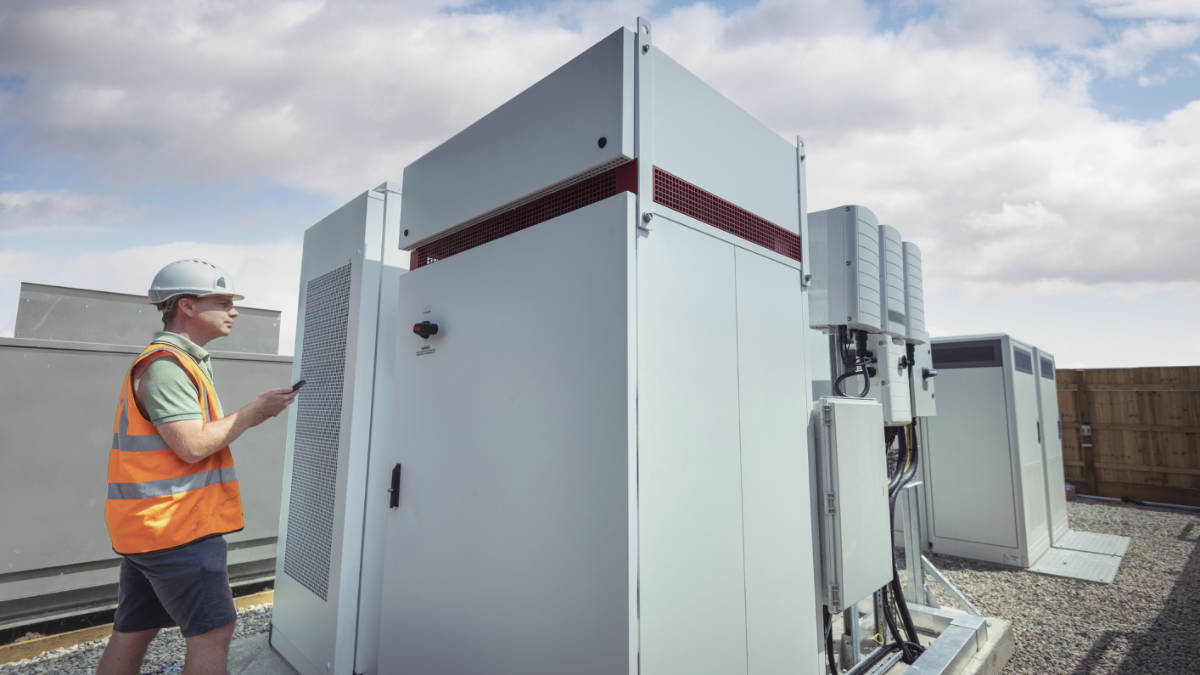Power Up: Renewables are hitting new peaks but the focus needs to shift to energy storage

More batteries and other types of energy storage are desperately needed. Pic: monty rakusen via Getty Images.
There is little doubt that renewables energy – be it solar or wind – is making a difference on Australia’s energy landscape.
Data out of the National Energy Market has clearly outlined periods of time when a combination of roof-top solar along with large-scale wind and solar generated enough power to provide 100% of the grid’s demand on the east coast – if the latter wasn’t curtailed at least.
This isn’t the same thing as being able to generate enough power to completely displace coal and gas for extended periods of time, but it certainly indicates that we are not far off reaching that goal.
Homeowners either facing the pain from soaring energy prices or with a keen interest in making a difference to the environment have embraced rooftop solar, with data from Sunwiz showing that the average solar systems has hit an all-time high of 9.5kW.
Additionally, whilst there were concerns about the rate at which new large-scale projects were being approved, Federal environment and water minister Tanya Plibersek has alleviated at least some concerns with this week’s approval for the 600MW Smoky Creek solar farm in central Queensland.
What’s particularly interesting where Smoky Creek is concerned is that project developer Edify Energy has flagged that it will include battery storage (and sheep grazing, but that’s not something we at Power Up are concerned with).
Time to push hard on storage
Here’s why it matters.
While being able to fill the grid’s demands completely for extended periods of time is a fantastic achievement, once we get there, it still means that we need to keep coal and gas plants around to provide baseload power once the sun goes down or natural gas peaking plants to provide the extra juice needed during periods of high demand.
There are certainly already a number of battery storage projects up and running as well as in the works – such as the troubled Snowy Hydro 2.0 pumped hydro project that has already experienced both cost blowouts and delays.
However, the total installed capacity of 1,451MW for batteries and 1,350MW for pumped hydro – according to Rystad Energy – is completely inadequate to meet the east coast grid’s demand of 32,569MW (for the 2022-23 financial year).
To top it off, most of these storage projects only have enough capacity to provide one or two hours of power, which is also far from ideal.
In plain English it means that if we want to meet net zero emissions, we desperately need to get more storage installed and running.
To achieve this goal, we also need to consider diversifying our storage options beyond just lithium-ion batteries and pumped hydro to include options (both new and established) such as flow batteries, molten salt and green hydrogen.
The latter is particularly intriguing as they not only offer the potential to power both baseload and peaking power plants, it could also jump-start the hydrogen sector.
Diversifying our storage options also ensures that we are not held hostage to the pressures faced by any single storage type, be it a shortage of critical minerals or production bottlenecks.
The bottom line is that this action needs to be taken now (or yesterday if possible) to ensure that storage can keep up with the growth in renewable generation capacity in order for us to meet net zero by 2050.
Related Topics

UNLOCK INSIGHTS
Discover the untold stories of emerging ASX stocks.
Daily news and expert analysis, it's free to subscribe.
By proceeding, you confirm you understand that we handle personal information in accordance with our Privacy Policy.








